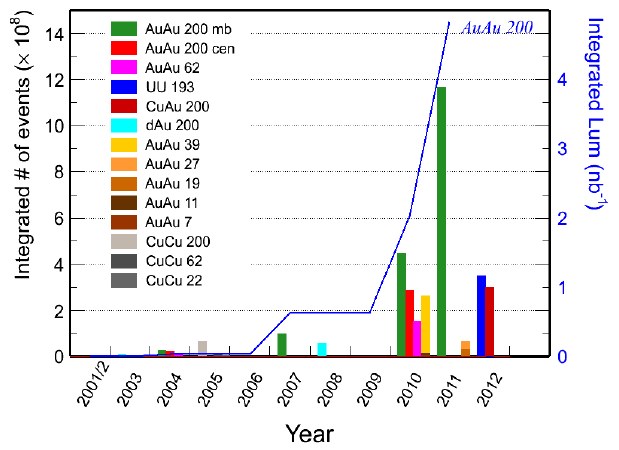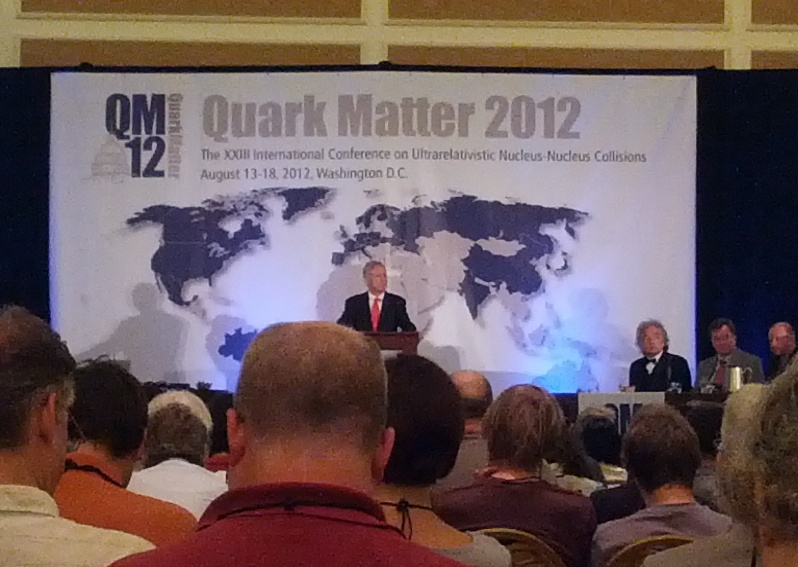Back to the blogofuture
Posted by David Zaslavsky onYou may have noticed that instead of delivering the summary of Quark Matter 2012 I promised in my last post, I disappeared from the blog for a few weeks. Unfortunately I got involved in some research work immediately after coming back, which left me with zero time for blogging anything longer than 140 characters.
Well, all that ends now. I’ve already written about the main results from Quark Matter, and that post already encompasses much of what was presented over the rest of the week, but I do want to mention a couple of significant activities that weren’t part of the conference proper.
First, on Thursday evening we were treated to a banquet in the Omni Shoreham’s main ballroom, followed by a popular science talk from Phil Plait, the guy behind the Bad Astronomy blog. In sharp contrast to the dense technical talks of the rest of the conference, this one was incredibly entertaining. If you ever get the chance to see him talk about his new book on cosmic disasters, I highly recommend it. I mean, how can you not enjoy half an hour spent making fun of the bad science in Armageddon? (also the subject …



